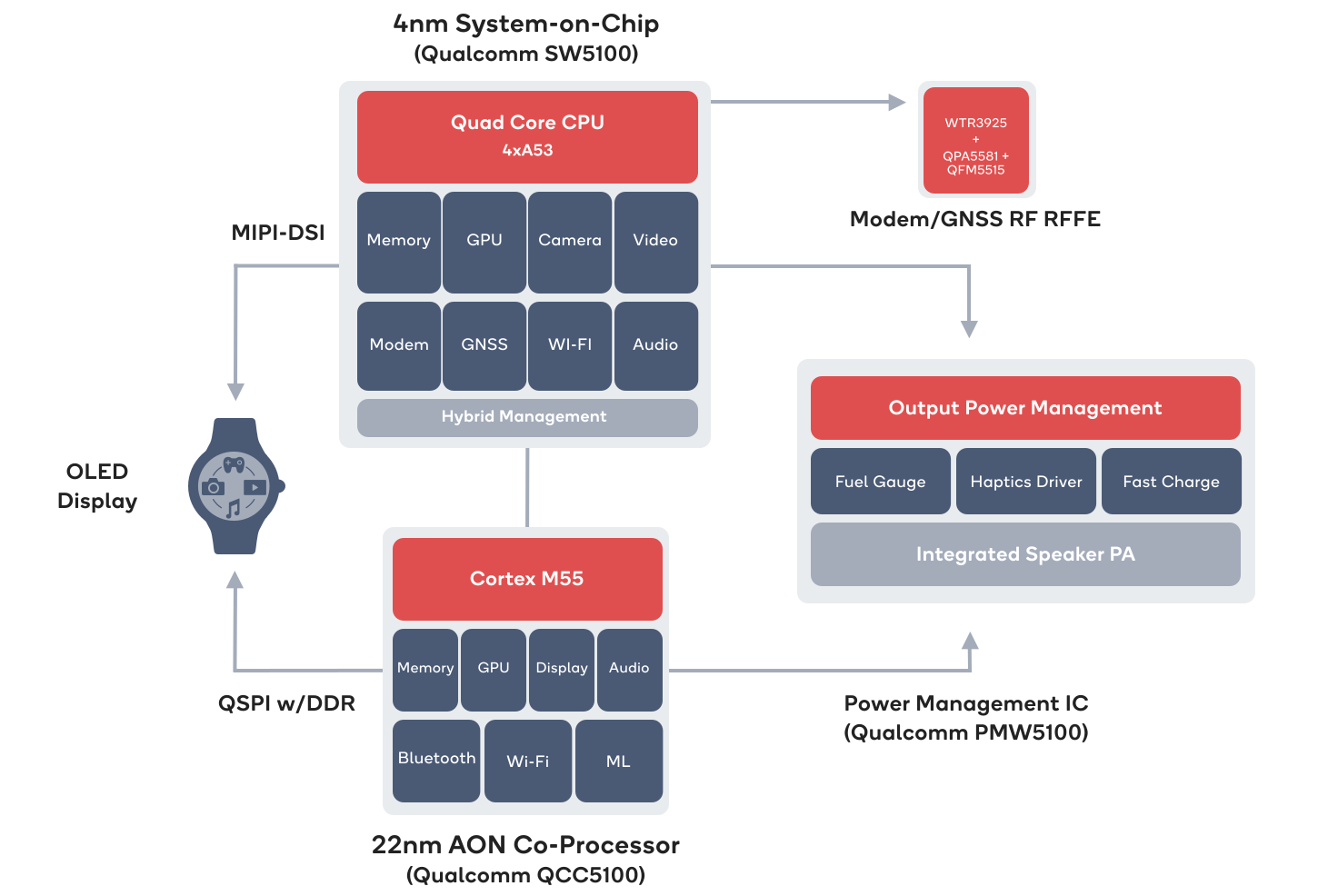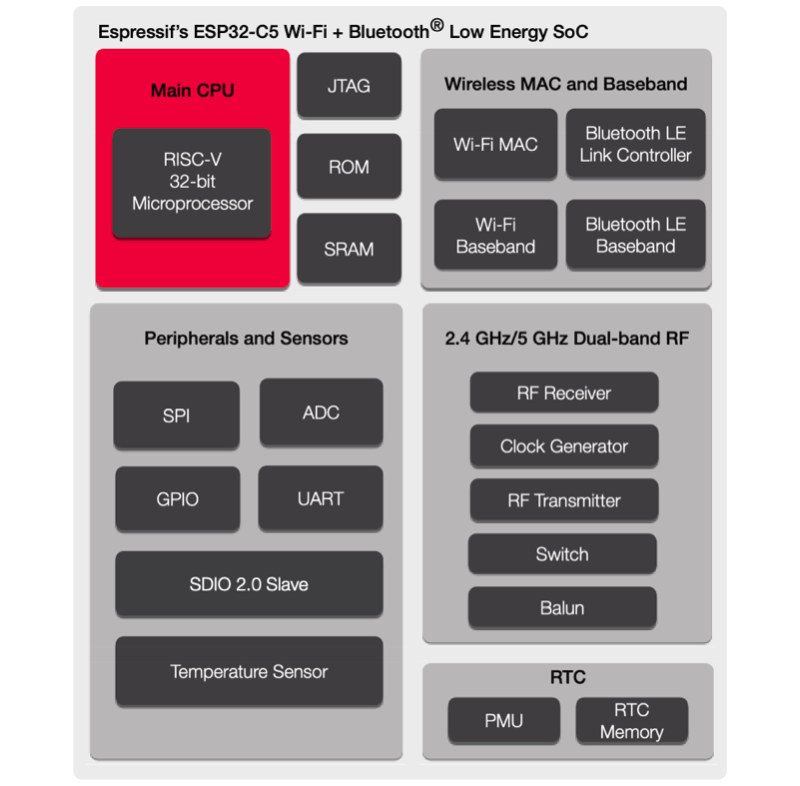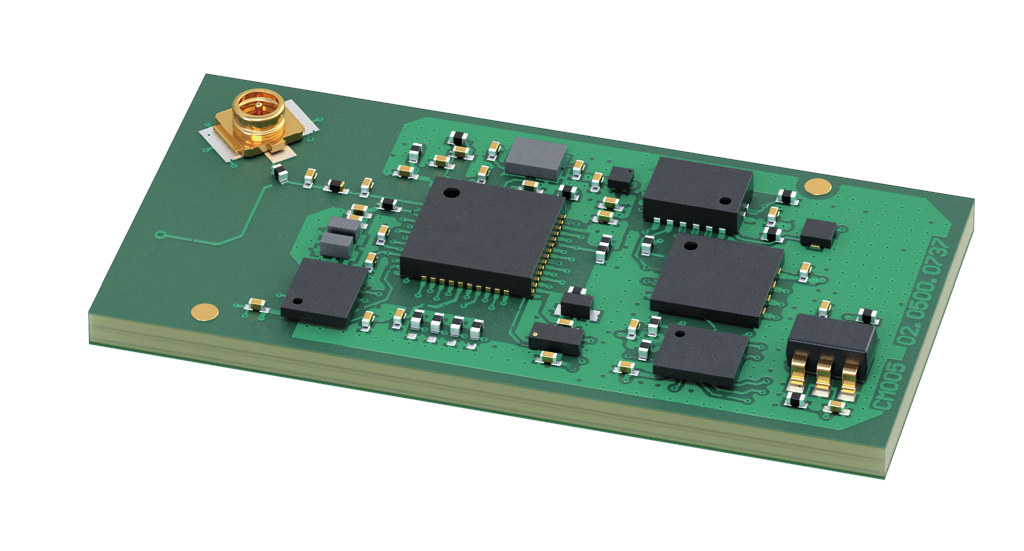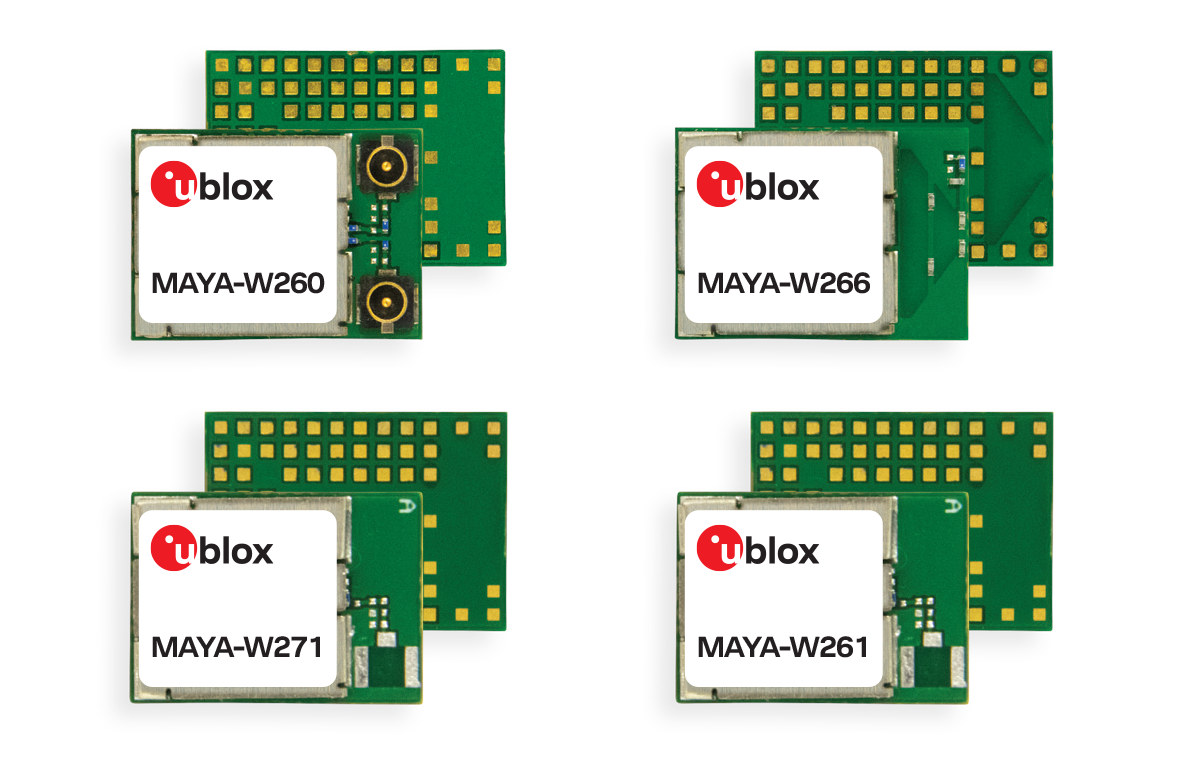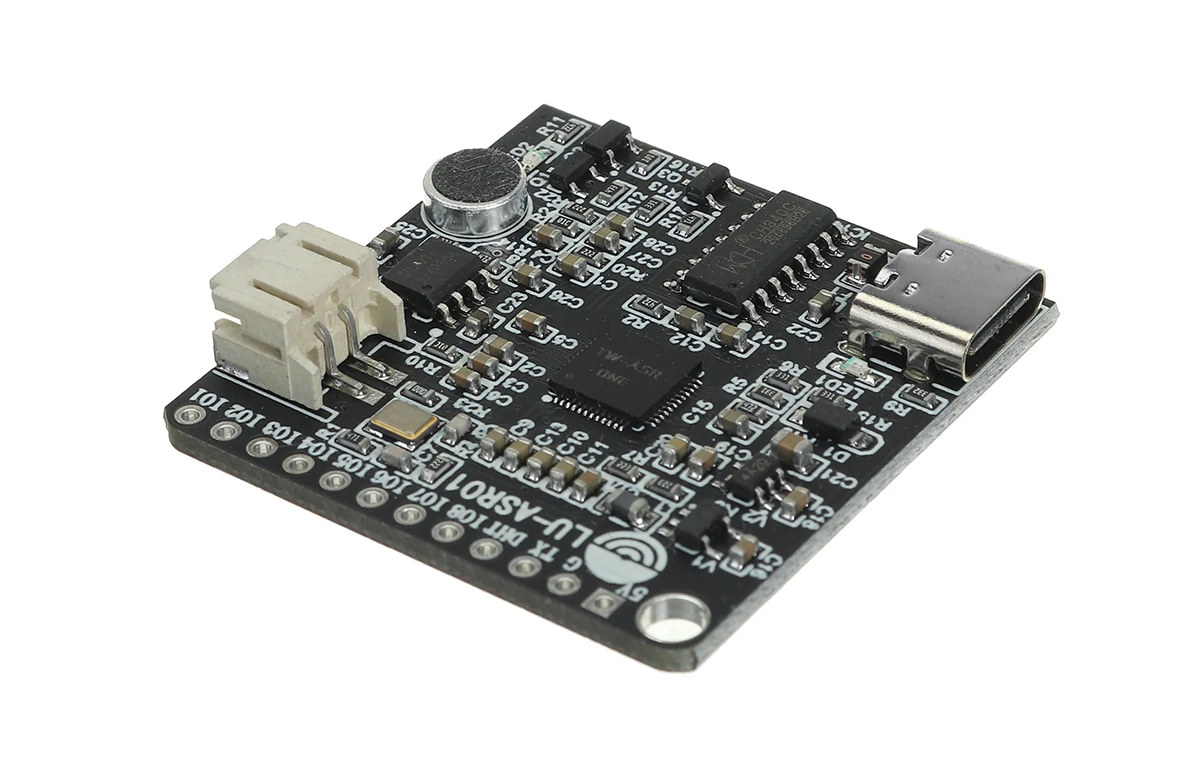It’s been a while since Qualcomm released a new platform for wearables. More exactly, the Snapdragon 4100 platform was announced a little over two years ago, and now Qualcomm has just introduced the Snapdragon W5+ and W5 Gen 1 platforms with up to 50% longer battery, twice the performance, and 30 percent smaller size. Just like the Snapdragon 4100, the Snapdragon W5 comes with four Arm Cortex-A53 processor (SW5100), but is clocked at 1.7 GHz and manufactured with a 4nm process, while the always-on (AON) co-processor is upgraded from a Cortex-M0 chip to the QCC5100 Cortex-M55 chip manufactured with a 22nm process. Snapdragon W5+/W5 specifications: W5100 SoC CPU – Quad-core Cortex-A53 processor @ up to 1.7 GHz GPU – Qualcomm Adreno A702 @ up to 1 GHz with OpenGL ES 3.1 API support DSP – Qualcomm Hexagon DSP V66K System Memory – 16-bit LPDDR4 up to 2,133 MHz […]
Imagination unveils IMG RTXM-2200 32-bit RISC-V real-time “Catapult” CPU
Imagination IMG RTXM-2200 32-bit RISC-V real-time CPU core is the first member of the company’s Catapult family comprised of four distinct RISC-V families for dynamic microcontrollers, real-time embedded CPUs, high-performance application CPUs, and functionally safe automotive CPUs. The company says it’s a highly scalable real-time, deterministic, 32-bit embedded CPU, that is feature-rich and flexible in design for mainstream devices, but, excuse the pun, leaves most of the details to your imagination… The new core will mostly be used as a helper core (aka co-processor) in more complex SoCs for 5G modems, cellular base stations, networking solutions for data transfer, packet management, and storage controllers, but may also find its way into smart meters. In all fairness, we do have some limited technical details with L1 cache sizes up to 128KB, I/D TCM sizes up to 128KB, and PMA regions. The real-time core will also include optional features such as single-point […]
ESP32-C5 RISC-V IoT MCU supports dual-band WiFi 6, Bluetooth 5.0 LE
Espressif Systems ESP32-C5 is an upcoming wireless RISC-V microcontroller for IoT applications that supports dual-band (2.4 & 5.0 GHz) WiFi 6 connectivity as well as Bluetooth 5.0 LE. It is the first dual-band processor from Espressif, as while the Shanghai-based company previously announced the ESP32-C6 WiFi 6 and Bluetooth 5 LE RISC-V SoC last year, it only supports 2.4 GHz frequency. Note it’s not the first dual-band WiFi 6 IoT chip on the market as NXP introduced the IW612 Wi-Fi 6, Bluetooth 5.2, 802.15.4 tri-radio solution last January, but ESP32-C5 should target different use cases. ESP32-C5 preliminary specifications: CPU – Single-core 32-bit RISC-V processor @ up to 240 MHz Memory – 400KB SRAM on-chip Storage – 384KB of ROM on-chip, support for external flash Connectivity Dual-band 802.11ax WiFi 6 in the 2.4GHz and 5 GHz bands, with 802.11b/g/n WiFi 4 standard support for backward compatibility 20MHz bandwidth for the 802.11ax […]
OSM Size-0 solder-on LGA module comes with ESP32 WiFi & BLE MCU
German embedded systems company iesy’s ESP32 OSM-0F is an ESP32-based solder-on LGA system-on-module that complies with SGET OSM Size-0 (30x15mm) form factor, offers WiFi and Bluetooth connectivity, and more. The SGET Open Standard Module (OSM) standard defines four module sizes, namely Size-0 (30x15mm), Size-S (30x30mm), Size-M (45x30mm), and Size-L (45x45mm), and all the modules we’ve covered so far were powered by a Linux-capable processor. But it’s more challenging, albeit not impossible, to design a Linux-capable OSM Size-0 module, and that form factor is better suited to microcontroller-class chips like ESP32. (Technically, ESP32 can run Linux, but it’s more for show that any practical applications) ESP32 OSM-0F specifications: Microcontroller – Espressif ESP32 dual-core Xtensa LX6 MCU @ 240 MHz with 512KB RAM, Wi-Fi 802.11 b/g/n and Bluetooth/BLE Storage – 32 Mbit SPI flash Antenna – u.FL connector 188 LGA contact points with Storage – SDIO Networking – 1x 10/100M Ethernet (RMII), […]
u-blox MAYA-W2 IoT module offers dual-band WiFi 6, Bluetooth LE 5.2, and Zigbee/Thread connectivity
u-blox MAYA-W2 is a tri-radio IoT module supporting dual-band WiFi 6, Bluetooth Low Energy 5.2, and IEEE 802.15.4 (Thread and Zigbee) connectivity based on the NXP IW612 or IW611 chipset introduced last January. The module is offered with a PCB antenna, u.FL connectors, and/or antenna pins, supports up to 600 Mbps link speed, and targets industrial and consumer mass-market applications in industrial automation, smart building & energy management, healthcare, smart home, and more. u-blox MAYA-W2 highlights: Wi-Fi 6 802.11ax dual-band 2.4 and 5 GHz Up to 600 Mbit/s throughput Output power EIRP – 18 dBm Operation modes: Access point (up to 16 stations), station, Wi-Fi direct (combinations) Bluetooth 5.2 Dual-mode Bluetooth classic and Bluetooth Low Energy 5.2 LE Audio Output power EIRP – 20 dBM Bluetooth profiles and services – Bluetooth HCI 802.15.4 radio Supports Thread and Zigbee Support for the Matter protocol Variants with PCB-antenna, U.FL connectors, and antenna […]
$8 LU-ASR01 offline speech recognition board features “TW-ASR ONE” chip
LU-ASR01 is a board capable of offline speech recognition with a built-in microphone, a speaker connector, twelve through holes for GPIOs and a temperature sensor interface for DHT11/DS18B20, plus a USB Type-C port for power and programming. At first, I thought it might be based on the Unisound US516P6 microcontroller which we’ve seen on some inexpensive offline speech recognition modules, but the chip looks completely different, with the marking TW-ASR ONE. So let’s investigate… LU-ASR01 board specifications took some effort, but here’s what I’ve managed: MCU – TW-ASR ONE (aka TWen ASR ONE) microcontroller with 4MB flash, 512KB RAM, and a BNPU for voice processing; package: QFN48L (6x6x0.85mm) Audio I/O Built-in microphone 2-pin speaker header plus 3W power amplifier for 4Ω/3W speaker Voice recognition Up to 10 meters wake-up range 98% ultra-high recognition rate Customizable to 5 wake-up words and 200 recognition words USB – 1x USB Type-C port for […]
The Eclipse Oniro Project aims to deliver consumer & IoT software that works across multiple platforms
Several of the embedded talks at FOSDEM 2022 mention the “Eclipse Oniro Project”. I had never heard about that project from the Eclipse Foundation, so let’s see how they describe it: Oniro is an Eclipse Foundation project focused on the development of a distributed open source operating system for consumer devices, regardless of the brand, model, make. Oniro is a compatible implementation for the global market of OpenHarmony, an open source operating system specified and hosted by the OpenAtom Foundation. Designed with modularity in mind, Oniro offers greater levels of flexibility and application portability across the broad spectrum of consumer and IoT devices — from tiny embedded sensors and actuators, to feature rich smart appliances and mobile companions. As a distributed and reusable collection of open source building blocks, Oniro enables compatibility with other open source technologies and ecosystems. Through close collaboration with projects and foundations such as OpenHarmony from […]
Imagination introduces Catapult RISC-V CPU cores
As expected, Imagination Technologies is giving another try to the CPU IP market with the Catapult RISC-V CPU cores following their previous unsuccessful attempt with the MIPS architecture, notably the Aptiv family. Catapult RISC-V CPUs are/will be available in four distinct families for dynamic microcontrollers, real-time embedded CPUs, high-performance application CPUs, and functionally safe automotive CPUs. The new 32-/64-bit RISC-V cores will be scalable to up to eight asymmetric coherent cores-per cluster, offer a “plethora of customer configurable options”, and support optional custom accelerators. What you won’t see today are block diagrams and detailed technical information about the cores because apparently, all that information is confidential even though some Catapult RISC-V cores are already shipping “in high-performance Imagination automotive GPUs”. The only way to get more details today is to sign an NDA. Having said that we have some more information about the target markets and development tools. Imagination Capapult […]


